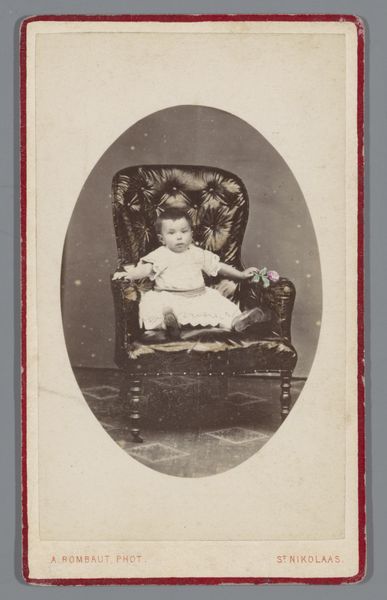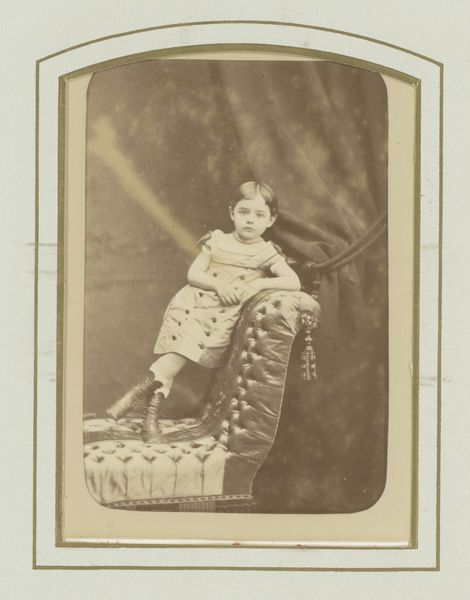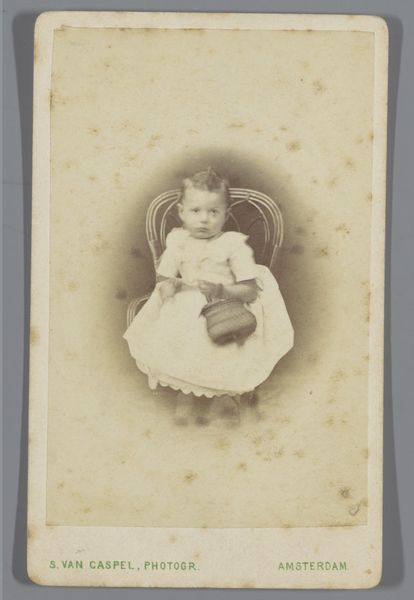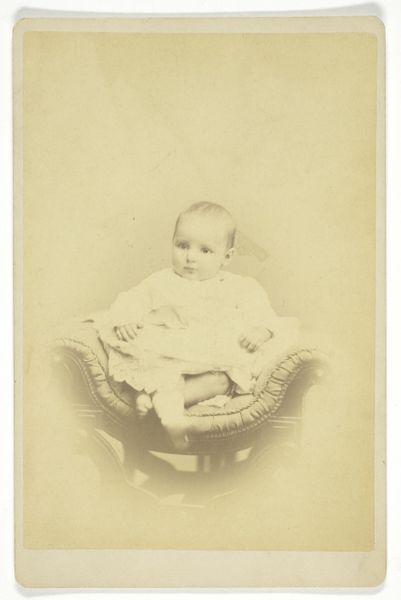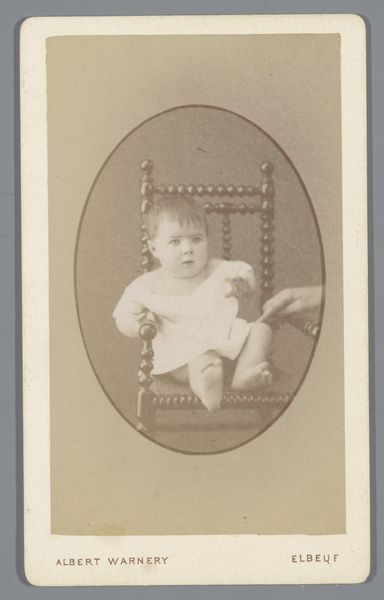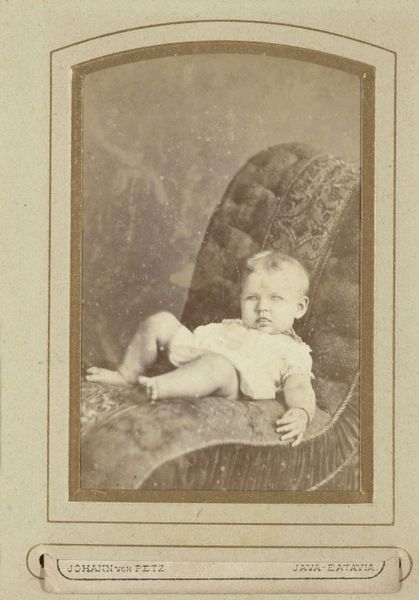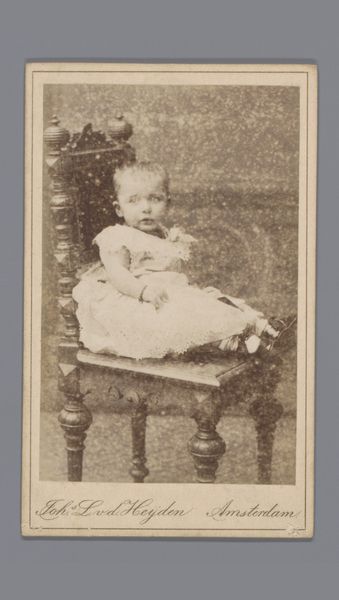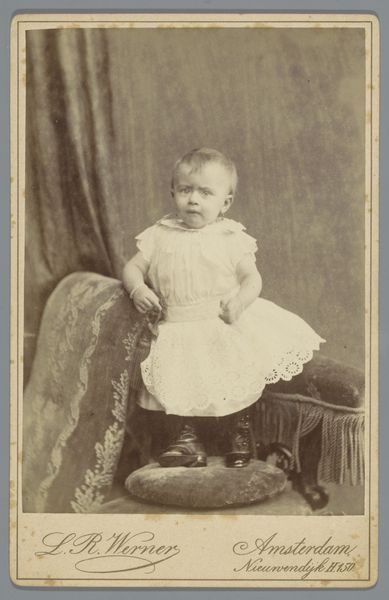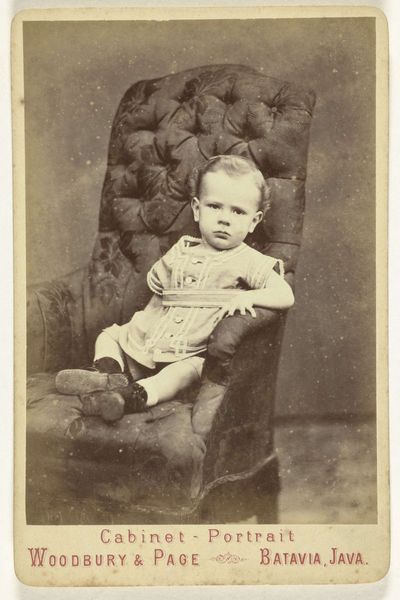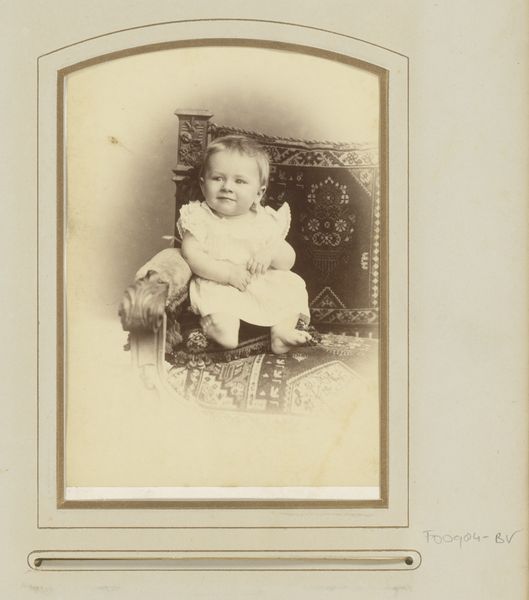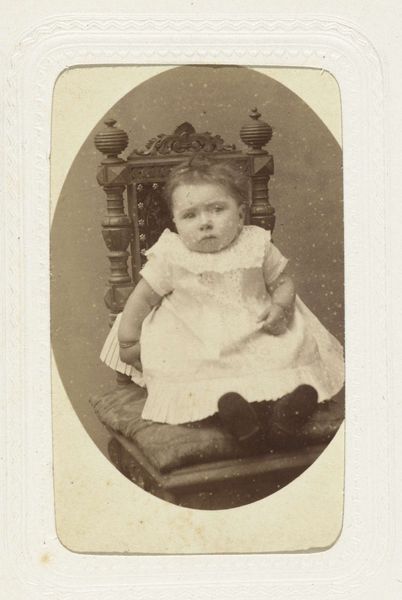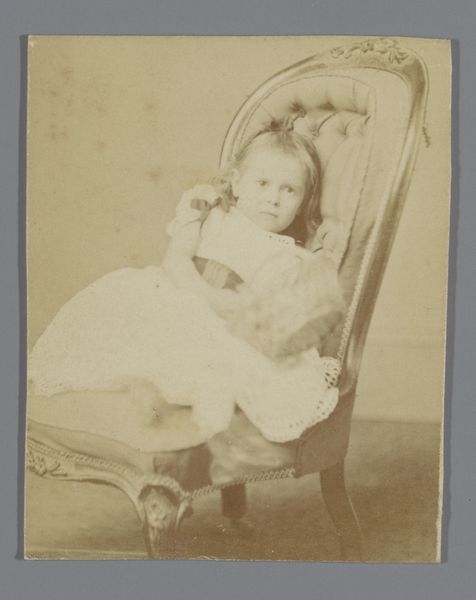
photography, gelatin-silver-print
#
portrait
#
photography
#
gelatin-silver-print
#
19th century
#
genre-painting
#
realism
Dimensions: height 128 mm, width 92 mm, height 302 mm, width 146 mm
Copyright: Rijks Museum: Open Domain
Curator: Ah, look at this. Henri de Louw’s "Portret van een baby Guus in een stoel", captured in 1882, a gelatin silver print held here at the Rijksmuseum. What strikes you first about it? Editor: Honestly? A slightly melancholic stillness. It’s as if the very air is holding its breath. The light, or the lack of it, contributes to that feeling. The textures—the velvet of the chair, the baby's dress—hint at comfort, yet there's an undeniable gravity. Curator: That gravity, I think, is a direct consequence of the social conventions surrounding portraiture at the time. It had a public purpose; images documented social status and belonging. The Realism movement, in its approach to portraying everyday subjects, also demanded unvarnished truth. This photograph mirrors these sensibilities, while the medium of photography gained social currency. Editor: I see that. Yet it’s also a glimpse into something deeply personal. I wonder what Baby Guus was thinking, or rather, feeling in that very moment. There's a sense of unformed consciousness, gazing out as if they’re seeing something the rest of us can’t quite grasp. Also, the contrast: crisp, clean, white linen clothes atop the ornately detailed, luxurious, deep-toned armchair. It strikes me, looking closer, that his tiny fingers are gripping on so tightly, maybe a little fearful, but overall cute, right? Curator: Absolutely, there is cuteness but to my eyes it echoes an element of constraint and vulnerability, made all the more acute by our knowing that babies become adults and lives unfold regardless of any individual’s early portraits and potential. This vulnerability in relation to how quickly images travel and how long art institutions archive and disseminate this early image feels potent in its ethical demand. Editor: It's a tender moment, frozen. When looking closely you find, perhaps surprisingly, even today there are questions asked about social responsibility regarding imagery. It brings up ideas of societal shifts throughout time; we reflect not only on Baby Guus’ potential, but societal and technological progress, too. I appreciate how this work fosters conversations around photography, babies, art and history, it really is thought-provoking. Curator: Precisely. An image that transcends mere documentation, prompting reflections across time, culture and subject, whilst holding that original poignant atmosphere.
Comments
No comments
Be the first to comment and join the conversation on the ultimate creative platform.
